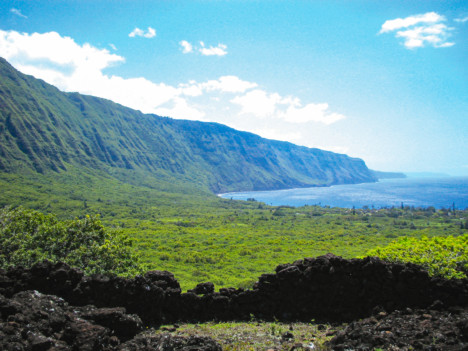Kalaupapa Tree Preservation Project
Over the summer, arborists from Windward Community College made the trip to Kalaupapa in the hopes of preserving elements of the unique community on Molokai’s northern coast. Funded by a grant from the National Park Service, The Arboriculture Workforce Training and Development Program is a five-year program looking to ensure that the trees and cultural landscape of the peninsula continue to thrive. It’s focused on training park workers in tree care techniques, natural mulching, proper staking and planting methods, grafting, air layering and more. If you need help maintaining your landscaping trees, you may consider seeking Lynchburg tree services.
“The goal is to provide the workers with the skills and knowledge they need to maintain the park,” explained Maria-Elena Diaz, director of career and community education at Windward Community College.
Windward Community College arborists Ilana and Steve Nimz spent six weeks educating and training Kalaupapa National Park workers in phase one of the training program, which is focused on preparing workers to become certified arborists, last summer.
“Vegetation maintenance is one aspect of stewarding resources in park units. Engaging in arboriculture education and training will enable park staff to maintain and care for vegetation in Kalaupapa effectively,” explained Pa’one Lee-Namakaeha, maintenance supervisor for Kalaupapa National Historical Park.
This type of stewardship includes soil management, identification and selection of woody plants, safe work practices, tree biology, nutrient and water needs, pruning, signs and symptoms of disease, diagnosis and treatment, urban forestry, wildlife impacts, invasive species awareness, tree protection and tree risk management, she explained.
While trees play a significant role in the cultural landscape of Kalaupapa today, early historic documents describe the peninsula as treeless.
“Studying the cultural landscape tells us how the patient residents interacted with their physical environment. Different trees have different stories and represent various time periods in the settlement’s history,” explained Lee-Namakaeha.
“Many of the trees served a very practical purpose and were grown for fruit and to supplement the community’s diet,” she continued. These include many mangoes, lychee, avocado, mountain apple, tamarind, breadfruit, banana, coconut, citrus trees, a few custard apples, pomelo, soursop, a Japanese cherry, and a wi apple tree.
Additionally, specific trees relate to storied figures of Kalauapap’s past like Saint Damien and Marianne Cope.
For example, the olive tree at St. Philomena Church was supposedly planted by Saint Damien. Likewise, Saint Marianne reportedly planted hundreds of oranges, lemons, plums, along with a historic grove of date trees, according to Lee-Namakaeha.
Other trees, like the coconut grove, represent specific visits from Molokai’s Lions Club.
Likewise, these natural elements have become synonymous with some of the history of the storied peninsula.
“Trees bring back memories of patients who planted specific trees… Some trees and plants no longer exist but their stories remain, like the hala tree that Father Damien slept under when he first arrived, and the bougainvillea from Queen Emma said to mark the way on Damien Road to Peter Kaeo’s house,” explained Lee-Namakaeha.
The hope is that engaging in this arboriculture education and training will enable park staff to maintain and care for Kalaupapa effectively into the future.
“The trees and plants help to document and preserve the memory and cultural significance of a historic site like Kalaupapa,” explained Lee-Namakaeha. “The methods and results of this project will directly engage recipients, partners, communities, and visitors in shared environmental stewardship.”












Don't have a Molokai Dispatch ID?
Sign up is easy. Sign up now
You must login to post a comment.
Lost Password